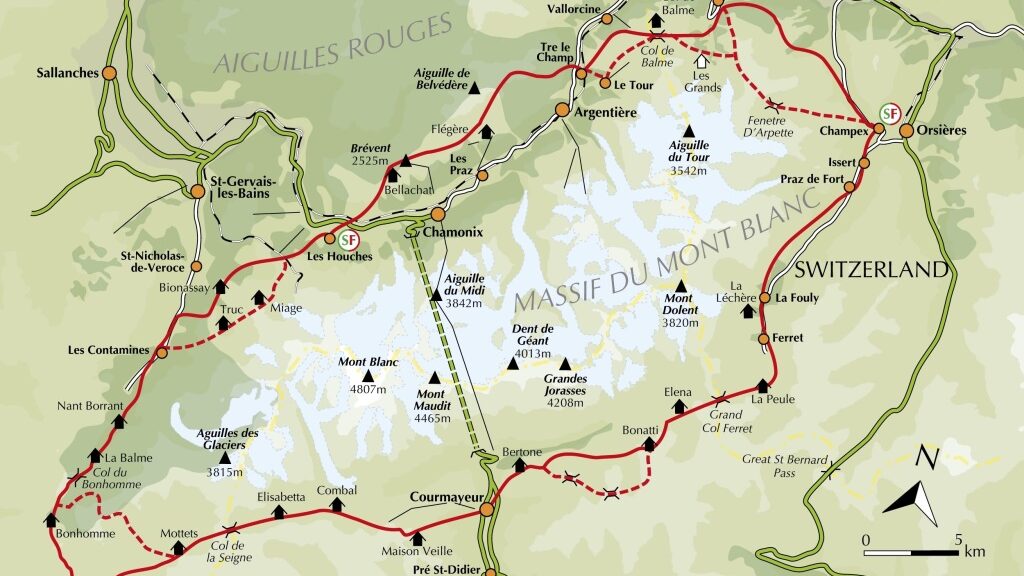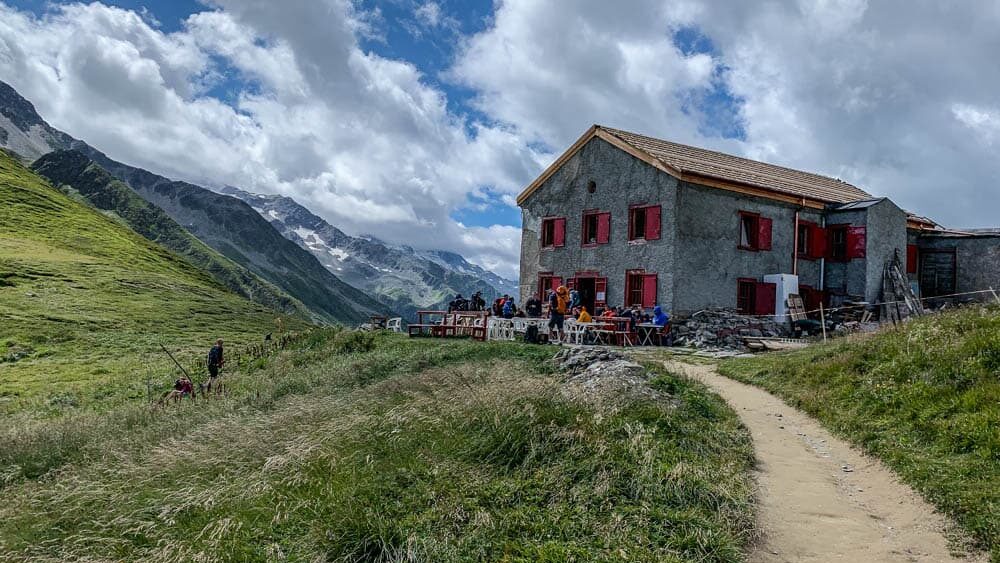The Tour du Mont Blanc is one of the most iconic long-distance hiking trails in Europe. This 170-kilometer (106-mile) trek takes hikers through three countries – France, Italy, and Switzerland – and offers stunning views of the Mont Blanc massif, the highest mountain in the Alps. The trail is a popular choice for backpackers and hikers looking to experience the beauty of the European Alps while challenging themselves with a multi-day trek.
In this article, we will explore the logistics of hiking and backpacking on the Tour du Mont Blanc, including route options, accommodations, gear essentials, and tips for a successful trek.
Route Options
The Tour du Mont Blanc can be completed in 7-10 days, depending on your pace and fitness level. There are several route options to choose from, each offering its own unique scenery and challenges.
The classic route starts in Les Houches, France, and follows a clockwise loop around the Mont Blanc massif. From Les Houches, hikers ascend to Col de Voza before descending into the Chamonix Valley. The trail then continues through Les Contamines and over Col du Bonhomme into Italy. After passing through Courmayeur, hikers cross into Switzerland via Grand Col Ferret before returning to France through Col de la Forclaz. The final stretch takes hikers through Les Houches and back to their starting point.
For those looking for a more challenging trek, there are alternative routes that include higher passes and more technical terrain. These routes may also offer quieter trails and less crowded accommodations.

Accommodations
One of the unique aspects of hiking the Tour du Mont Blanc is the variety of accommodation options available along the trail. Hikers can choose to stay in traditional mountain huts (refuges), guesthouses (gîtes), or hotels in the towns and villages along the route.

Refuges are basic mountain shelters that provide dormitory-style accommodation and meals for hikers. They are a popular choice for backpackers looking to immerse themselves in the alpine experience and meet fellow trekkers from around the world. Gîtes offer private or shared rooms with communal facilities and are often located in charming alpine villages. Hotels provide more comfort and luxury but may require advance booking during peak season.

It is recommended to book accommodations in advance, especially during the summer months when the trail is busiest. Many refuges and gîtes offer half-board options, which include dinner and breakfast, allowing hikers to refuel after a long day on the trail.
Gear Essentials
Packing for a multi-day trek like the Tour du Mont Blanc requires careful consideration of essential gear. Here are some key items to include in your backpack:
Backpack: A comfortable backpack with a capacity of 40-60 liters to carry all your gear.
Footwear: Sturdy hiking boots with ankle support for rocky terrain.
Clothing: Layered clothing suitable for varying weather conditions, including waterproof jacket and pants.
Sleeping bag: Lightweight sleeping bag suitable for mountain refuges.
Navigation: Map, compass, or GPS device to navigate the trail.
First aid kit: Basic supplies for treating minor injuries on the trail.
Food and water: High-energy snacks, water bottles or hydration system, water purification method.
Headlamp: Essential for navigating in low light conditions at night.
Toiletries: Travel-sized toiletries and biodegradable soap for use at refugees.
Trekking poles: Optional but helpful for stability on steep ascents and descents.

It is important to pack light while ensuring you have all necessary gear for safety and comfort on the trail.
Tips for a successful trek
Hiking the Tour du Mont Blanc is a rewarding but challenging adventure that requires careful planning and preparation. Here are some tips to help you make the most of your trek:
Train beforehand: Build up your fitness level by hiking with a loaded backpack on varied terrain before embarking on the Tour du Mont Blanc.
Check weather conditions: Be prepared for changing weather conditions in the mountains by checking forecasts before setting out each day.
Respect local customs: Be mindful of local customs and etiquette when staying in refugees or interacting with locals along the trail.
Leave no trace: Practice Leave No Trace principles by minimizing your impact on the environment and packing out all waste.
Pace yourself: Take breaks as needed to rest and refuel throughout each day’s hike to avoid exhaustion.
Stay hydrated: Drink plenty of water throughout each day’s hike to prevent dehydration at high altitudes.
Enjoy the journey: Take time to appreciate the stunning scenery and wildlife along the trail while embracing the physical challenge of hiking in such a beautiful environment.
Conclusion
Hiking and backpacking on the Tour du Mont Blanc offers an unforgettable experience for outdoor enthusiasts seeking adventure in one of Europe’s most spectacular landscapes. With careful planning, essential gear, and an adventurous spirit, trekkers can enjoy breathtaking views of glaciers, alpine meadows, and towering peaks while immersing themselves in local culture along this iconic long-distance trail.
Whether you choose to hike solo or with a group of friends, completing this challenging trek will leave you with lasting memories of an epic journey through some of Europe’s most stunning natural scenery.
So lace up your boots, pack your backpack, and get ready to embark on an unforgettable adventure on the Tour du Mont Blanc!









